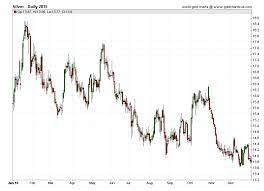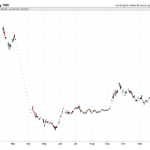Silver prices in 2015 were like a wild rollercoaster ride, with prices fluctuating significantly throughout the year. From January to December, the prices ranged from $14.49 oz to $18.22 oz, with daily fluctuations influenced by various factors such as supply and demand, economic indicators, and geopolitical events.
The year also saw allegations of silver price manipulation, which added to the uncertainty and volatility surrounding the market. Despite the challenges and controversies, the silver market remained an attractive investment option for many investors.
The year 2015 saw a range of available products and uses for silver, from coins and bars to industrial applications, which added to the market’s complexity and diversity. In this article, we will explore the 2015 silver market, analyzing the factors that affected its fluctuations and the allegations of price manipulation.
Through data-driven and market-focused analysis, we aim to provide an objective and analytical view of the silver market in 2015.
2015 Silver Price Data
Despite the potential inaccuracies of the daily silver price data from 1968-2021, it is still useful to examine the fluctuations of prices in 2015. The historical trends show that the prices ranged from $14.49 oz to $18.22 oz during this time period and were allegedly manipulated from 2007-2013. It is important to note that SD Bullion does not guarantee the accuracy of price data, and the prices are affected by various factors such as supply and demand, economic indicators, and geopolitical events.
Furthermore, analyzing the LBMA silver price fix history data from August 21, 2015, to December 31, 2015, reveals that prices fluctuated between $13.71 oz and $16.18 oz. This data is important for investors and traders who rely on accurate market information to make informed decisions.
Understanding the historical trends and fluctuations of silver prices is crucial to predicting future market trends and making sound investment choices. Therefore, despite the potential inaccuracies, examining silver price data is essential for anyone interested in the precious metals market.
Factors Affecting Prices
Various economic indicators, supply and demand, and geopolitical events are among the factors that influence the movement of silver prices. Economic indicators such as inflation rates, interest rates, and GDP growth can have a significant impact on the price of silver. When inflation rates are high, investors tend to turn to precious metals such as silver as a hedge against inflation. Similarly, when interest rates are low, investors may choose to invest in silver as an alternative to low-yield bonds.
Geopolitical events can also have a significant impact on the price of silver. Political instability, wars, and global economic downturns can all lead to an increase in demand for safe-haven assets such as silver. For example, during the 2008 financial crisis, the price of silver increased significantly as investors turned to precious metals as a safe-haven asset. Understanding the various factors that influence the price of silver is important for investors looking to make informed decisions about their investments.
| Economic Indicators | Impact on Silver Prices |
|---|---|
| Inflation Rates | Increase |
| Interest Rates | Decrease |
| GDP Growth | Increase |
| Geopolitical Events | Impact on Demand |
| Political Instability | Increase |
| Wars | Increase |
| Global Economic Downturns | Increase |
Table: Factors Affecting Silver Prices
Available Products and Use
The discussion now turns to the available products and potential uses for individuals interested in investing in precious metals.
SD Bullion offers physical precious metal bullion products for asset preservation and allocation purposes. These products include silver coins, bars, and rounds, which are available in varying sizes and weights. Investors can choose to store their physical silver at home or in a secure vault, or can opt for a third-party storage solution. Physical silver offers a tangible asset that can potentially provide a hedge against inflation and market volatility.
In addition to physical silver, there are also paper silver investment options available, such as exchange-traded funds (ETFs) and futures contracts. These options allow investors to gain exposure to silver without physically owning the metal. However, it is important to note that paper silver may not always track the actual price of physical silver, and there is the potential for counterparty risk.
It is important for investors to carefully consider their investment strategies and goals, as well as the risks and benefits of each option, before making any investment decisions.
Frequently Asked Questions
What were the specific geopolitical events that impacted silver prices in 2015?
Like the ebb and flow of the tides, the geopolitical impact of events such as the Greek Debt Crisis and the Chinese Stock Market Crash played a significant role in the fluctuation of silver prices in 2015, alongside economic factors such as supply and demand.
Can you provide more information on the alleged silver price manipulation documented from 2007 through 2013?
Alleged price suppression in the silver market was documented from 2007 through 2013. Investigations revealed that some banks may have manipulated silver prices by artificially inflating or suppressing prices. The investigations resulted in banks paying fines for their involvement in the manipulation.
What is the outlook for silver prices in the future based on the factors that affected prices in 2015?
Like a game of chess, predicting silver prices requires strategic analysis of silver market trends and economic indicators. While unpredictable geopolitical events may affect prices, data-driven analysis remains key to informed decision-making.
How does the LBMA silver price auction work and how does it impact silver prices?
The LBMA Silver Price Auction is a daily electronic auction used to determine the price of silver. The auction is conducted by a panel of participating banks and impacts silver prices by providing a transparent benchmark price for global markets. Price impact analysis is important for understanding how the auction affects the supply and demand of silver.
What is the difference between physical precious metal bullion products and paper-based investments in silver?
Physical precious metal bullion products involve owning tangible assets, while paper-based investments in silver are typically futures contracts or ETFs that rely on price fluctuations. Physical investments offer long-term gains and asset preservation, while paper-based investments may offer short-term gains but carry higher risks.





